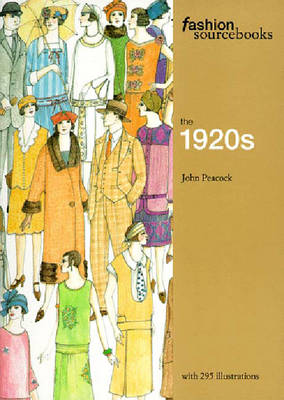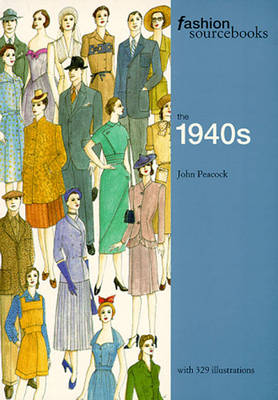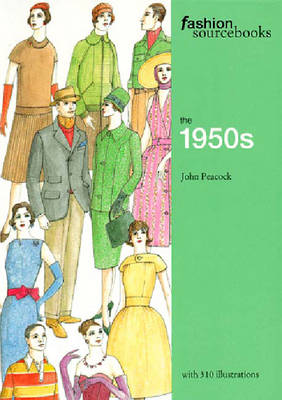Fashion Sourcebooks S.
3 total works
The 1920s saw radical changes in dress such as the drop waist, the bias cut, beading, the flapper, the diamond choker, and the cigarette-holder. It was perhaps the first "modern" decade of the 20th century. This book is part of a series charting the development of women's and men's clothing from 1900 onwards. It includes complete descriptions of each garment and accessories, itemizing colour, cut, necklines, lapels, sleeves, pockets, fastenings, buttons and belts. The year-by-year format progresses through day wear, evening wear, sportswear, leisurewear, underwear, negligee and wedding wear. The text is accompanied by costume drawings by John Peacock, and includes a chart summarizing the evolution of fashion, garment shapes, and biographies of the outstanding designers of the decade.
Fashion in the 1940s divides into two parts: pre and post New Look. The first period was dominated by World War II, when rationing affected the design of clothes for men and women. In 1947 Christian Dior's New Look brought a romantic revival: narrow, rounded shoulders, lightly padded hips and voluminous, billowing skirts introduced a new era of feminity and extravagence. This book is part of a series charting the development of women's and men's clothing from 1900 onwards. It includes complete descriptions of each garment and accessories, itemizing colour, cut, necklines, lapels, sleeves, pockets, fastenings, buttons and belts. The year-by-year format progresses through day wear, evening wear, sportswear, leisurewear, underwear, negligee and wedding wear. The text is accompanied by costume drawings by John Peacock, and includes a chart summarizing the evolution of fashion, garment shapes, and biographies of the outstanding designers of the decade.
The 1950s witnessed a new "doe-eyed" femininity in women's fashion. The clothes became more conventional, and women wore scarlet lips and fingernails. Dior's New Look influenced softer shoulders, corseted waists, and fuller longer skirts aided by petticoats. This book is part of a series charting the development of women's and men's clothing from 1900 onwards. It includes complete descriptions of each garment and accessories, itemizing colour, cut, necklines, lapels, sleeves, pockets, fastenings, buttons and belts. The year-by-year format progresses through day wear, evening wear, sportswear, leisurewear, underwear, negligee and wedding wear. The text is accompanied by costume drawings by John Peacock, and includes a chart summarizing the evolution of fashion, garment shapes, and biographies of the outstanding designers of the decade.


